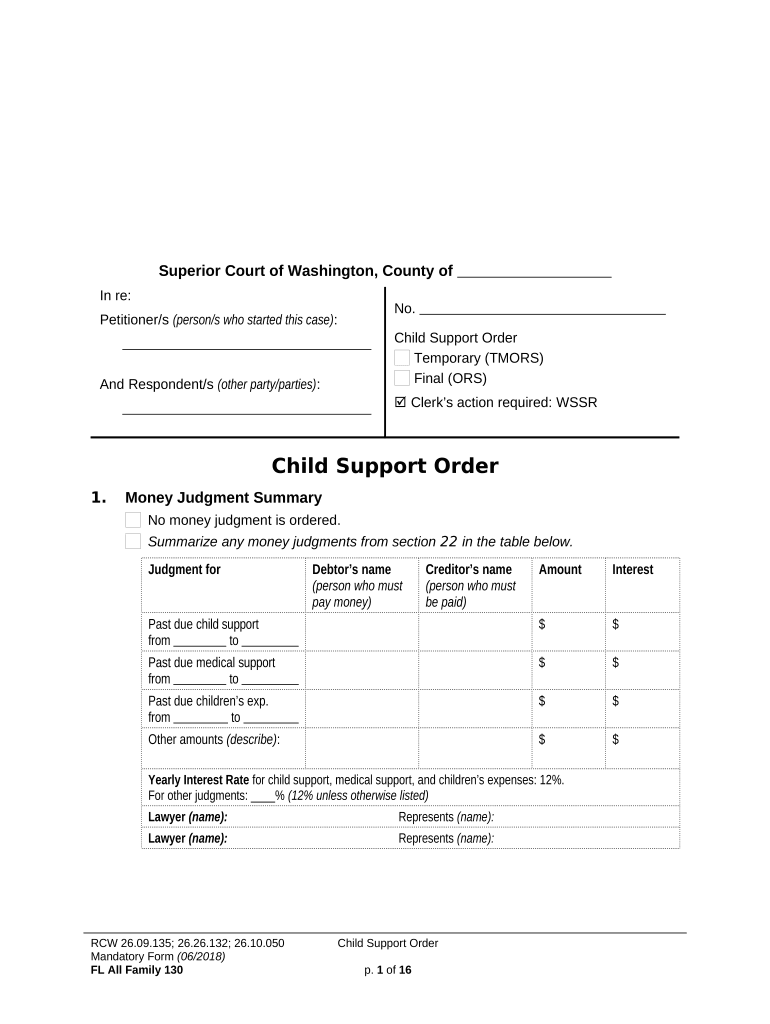5 Steps to Complete Child Support Forms in CA

Completing child support forms in California (CA) can seem daunting at first glance, especially if you're navigating this process for the first time. Whether you're the custodial or non-custodial parent, understanding the steps and requirements is crucial for ensuring that the child's needs are met fairly and legally. This guide aims to walk you through the process step by step, simplifying what might otherwise be a complex procedure.
Step 1: Understand Your Child Support Eligibility

Before diving into the paperwork, understanding your eligibility is key:
- Parents: You must have a biological or legal parental relationship with the child.
- Guardianship: If you're a legal guardian or if someone else is seeking support for the child, the legal relationship must be established.
- Establishing Paternity: If paternity isn't legally established, this is a prerequisite before support can be determined.
- Residency: Both the child and the person requesting support must reside in California.
Step 2: Gather Necessary Documentation

Organizing your documents beforehand will streamline the process:
- Income Information: Pay stubs, tax returns, W-2 forms, or any proof of income for both parents.
- Expense Records: Any records related to child care, healthcare, and other expenses related to the child.
- Custody and Visitation Orders: Any existing court orders regarding custody, visitation, or paternity.
- Personal Identification: Driver's license, Social Security cards, birth certificates, etc., for both parents and the child.
🔍 Note: Keep these documents handy as they might be needed during the court process.
Step 3: Determine the Correct Forms

California provides a variety of forms for child support, depending on your situation:
- FL-150: Income and Expense Declaration.
- FL-195: Child Support Case Registry Form.
- FL-192: Request for Order.
- FL-320: Responsive Declaration to Request for Order.
These forms can often be found online through the California Courts website or at local family law facilitators.
💡 Note: Each form requires precise completion to avoid delays or denials. Ensure you’re using the most current versions of these forms.
Step 4: Fill Out the Forms

Here's a detailed breakdown on how to fill out some of the most common forms:
FL-150: Income and Expense Declaration

- Personal Information: Fill in your name, the other parent's name, and your child(ren)'s names.
- Income: Provide detailed financial information including gross income, deductions, and all sources of income.
- Expenses: This includes monthly living expenses, child-related costs, and support for other children if applicable.
🔖 Note: Accurately report all income and expenses as this will be crucial for determining child support amounts.
FL-195: Child Support Case Registry Form

- Case Information: Court number, county, and names of the parties involved.
- Child Information: Details like name, birth date, and Social Security number (if available).
- Signature: Both parents should sign to acknowledge the information provided.
Step 5: File the Forms and Attend Court

Once you've completed your forms:
- Filing: Submit your forms to the court clerk in your county.
- Service: You must serve the non-filing parent with copies of these forms; typically, this involves personal delivery or certified mail with return receipt.
- Court Hearing: Attend the scheduled hearing where a judge will review your case. Dress appropriately and be prepared with all your documentation.
In conclusion, navigating the child support process in California requires understanding the legal framework, meticulous preparation, and attention to detail. By following these steps, you can ensure that your child's financial needs are legally addressed and both parties' rights are protected. Each step from understanding eligibility to attending court hearings is crucial, and taking the time to go through this process thoroughly will benefit everyone involved.
What if paternity hasn’t been established?

+
Establishing paternity is crucial before child support can be ordered. You would need to file for paternity testing, which can be facilitated through the court or child support services.
Can child support be modified?

+
Yes, child support orders can be modified if there’s a significant change in circumstances, like job loss, income change, or changes in custody arrangements. You must file a petition to modify the order.
What if the other parent lives in another state?

+
Interstate child support cases can be managed through the Uniform Interstate Family Support Act (UIFSA), which facilitates the enforcement and modification of support across state lines.



